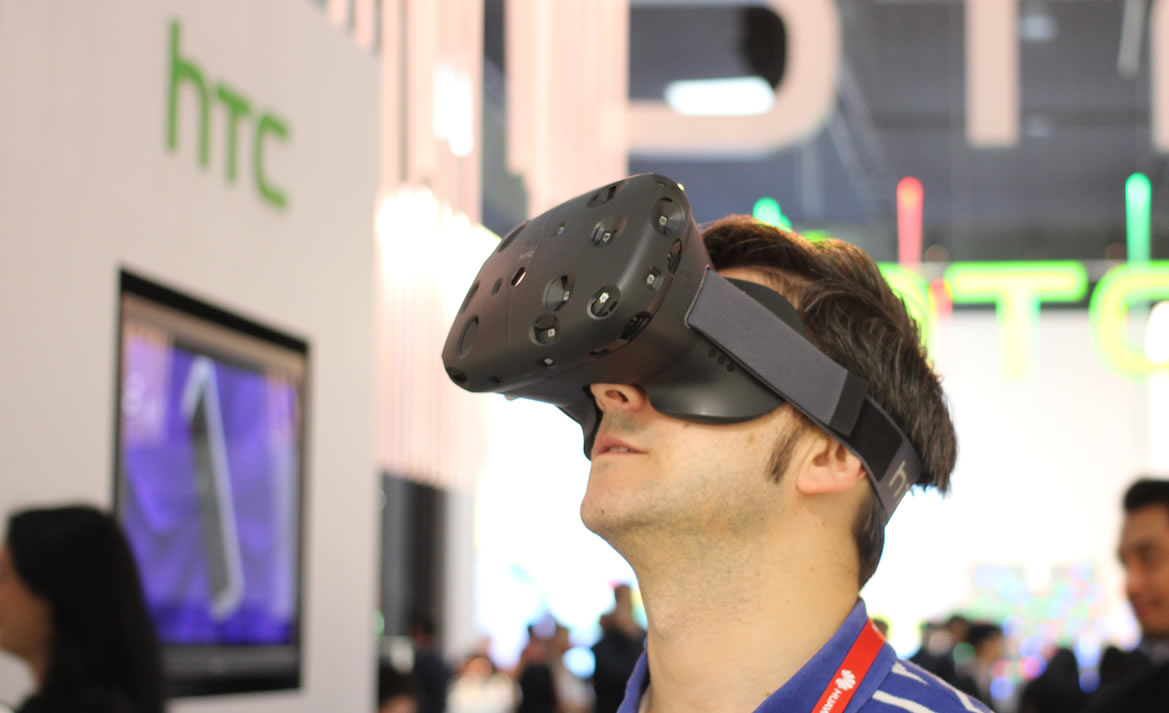HTC Vive

Here at Pulse we love technology and we would be slacking if we didn't take a little time to talk about the HTC Vive. The limited release next month is doubted by some but many still hope to have this essential piece of kit in their hands by Christmas. With December almost upon us and still no news on a 2015 release or pricing, talks of delays have been inevitable. If HTC and partners Valve can produce a limited consumer release in December then this will be the must have device for Christmas at least for those who can use it.
The specification for a VR capable PC doesn't come cheap, a system that can produce 90 frames per second on a 2160x1200 display (or 1080x1200 per eye) comes with a recommendation of a NVIDIA GTX970 or an AMD R9 390. Cards running at over £250, or the price of a bare bones Xbox One package. Building a complete PC for VR is estimated to run to at least £700 without utilising parts from your old PC.
If you can't quite reach those specs though you may be in for a nasty surprise. Because of the nature of VR, it's almost like you are there in the simulation, drops in frame rate can be disconcerting as the displays lag behind when you move and in some cases individuals have experienced motion sickness.
So what is the attraction? While it's impossible to show you what VR looks like unless you have experienced it yourself. Being able to perceive depth from two projected images with different polarisation by using 3D glasses was just the start, VR allows you to have an individual perspective displayed on a screen for each eye and for those perspectives to change depending on where you look within the simulation. Playing games with this technology is quite literally game changing.
With graphics improving year on year immersion is the next logical step in gaming, but other industries are looking to VR as well. For construction and architecture VR offers a valuable insight into what it feels like to walk through a building before it's ever been built. The entertainment and sports industries are looking at new ways to exploit VR to give viewers a more immersive experience, and the VR Game of Thrones developer, James Crowson recently wrote, 'I'm sure that it's going to play an important part in the bridge between technology and health, for example, using exposure therapy to treat people with phobias such as acrophobia.' As VR becomes more commonplace, marketing teams can allow customers to see their products as though in person. It's an exciting time and not just for gamers.
HTC may be the first to release a true consumer VR headset but Samsung's Gear VR, released in the US this month, may be a better option for those not yet ready for the financial investment required for the HTC Vive or the Oculus Rift, that is, if you have a Samsung phone which fits into the unit.
If you want to try VR now, Google Cardboard offers an even more affordable solution that fits a wider variety of phones.
We have created Virtual Reality apps for leading pharmaceutical clients including Pfizer, we provide interactivity by using gesture-based controllers like Leap Motion. If you'd like to provide your exhibition visitors with a fully immersive, 3D experience then get in touch.